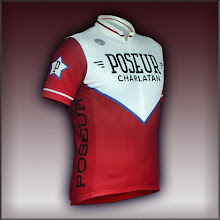
Further investigation into the recent overtaking collision of a cyclist in Dallas reveals that, contrary to the opinion expressed by a "trained crash investigator", operating on the shoulder at the time in question would have most likely resulted in much more severe injuries to the cyclist.
The cyclist was traveling south on Buckner, centered in the right lane, having just crossed over I-30 and the highest point of the bridge. Due to gusty headwinds, he was traveling around 10 MPH. It was 11:15 at night, the cyclist was traveling home from work, a 22 mile commute.
The motorist A (who struck the cyclist) was traveling in the right lane. Motorist B, merged right into him from the center lane, cutting him off. Motorist A swerved right onto the shoulder to avoid a collision. Motorist B, upon seeing the cyclist directly in front of him, swerved left to pass him, avoiding a sideswipe by inches. His left tires were about two feet into the next lane as he passed the cyclist.
When asked, the cyclist allowed that the perceived high speed of motorist B may have been due to the close proximity of him when he went by and not empirically true.
Motorist A saw the cyclist after he began to re-enter the roadway, and he swerved right in a belated attempt to avoid him. The cyclist was struck in his right calf by the PT Cruiser's front bumper, and his right hip, arm and shoulder bounced against the left window post, breaking the mirror off of the car. The cyclist then landed on his right side, banging his head on the pavement. Motorist A stopped to render aid and call for help, as did many a passerby. Motorist B fled.
Motorist A was operating without insurance.
The Dallas Police Officer interviewed for this piece described himself as a "trained crash investigator". He cited many reasons why it was not prudent for a cyclist to operate on that roadway. "It is a high-speed road", (Signed MSL 40 MPH), "It was late at night on St. Patrick's Day", "Two out of three people in that area are intoxicated that time of night", "He was obscured by the crest of the bridge for following traffic", and a few others.
He insisted that a better route for a cyclist was to travel on the improved shoulder. He was unswayed when it was pointed out that it was debris strewn and still covered with sand from the winter storms. It has ceramic reflectors placed in diagonal lines every twenty feet to indicate it is not a travel lane. The chances of cyclist striking debris and crashing or damaging his tires is heightened by the darkness.
When asked; "What is the cyclist to do when the shoulder ends?" He had no answer. (The shoulder ends when the bridge ends. There are no signs to warn either cyclists of this or to warn motorists that cyclists must re-enter the roadway.)
He insisted for a while that a cyclist must operate to the right edge of the roadway at all times, until he read for himself the actual statute. He didn't notice that a further right position would have almost certainly resulted in graver injuries.
When he was asked how long a couch in the right lane would last before being hit, he said it would be hit "Within minutes." This reveals his low opinion of the driving skills of Texas drivers, despite the pervasive evidence to the contrary.
As for his objection that the cyclist was obscured by the crown in the bridge, this is entirely speculative on his part. The cyclist had a Planet Bike Superflash tail light about three feet above the pavement, and numerous reflectors both above and below it. Sight lines are more than ample for vehicles operating within the speed limit.
He then retreated to "It's just common sense" argumentation and insisted that the cyclist was a contributory cause of the accident. "He may have a right to the roadway, but he would still be dead."
It is not yet known if any citations will be issued.
Image courtesy of Keri Caffry


